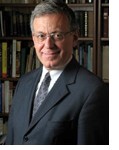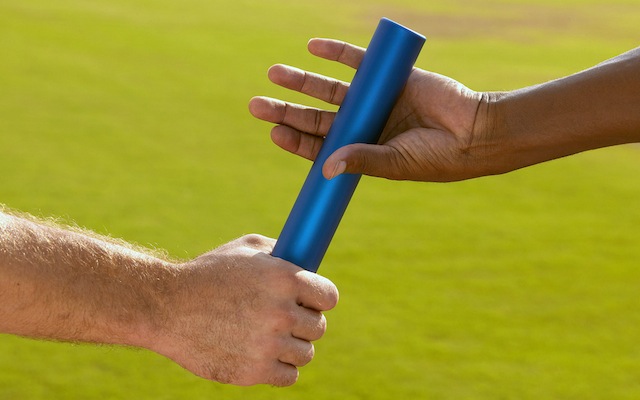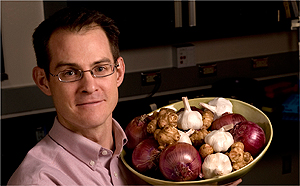One of the world’s leading experts on cholesterol particles is Ron Krauss. In this extended interview, he explains why he believes the very smallest LDL cholesterol particles are the most dangerous ones, and why it’s important to measure them.
Listen to Interview with Ron Krauss (28 Minutes)
We’ve known for a long time that cholesterol doesn’t just come in one flavor in the blood. That’s been established years ago with the observation that there’s so called good cholesterol, HDL, and so bad cholesterol, the LDL.
What we did is we dug deeply into the LDL and showed that there’s different kinds of LDL – there’s less bad and more bad, within the LDL. And these are particles that together add up to the total, but they give more information. than we get from just measuring the total. We think basically all of it comes from the liver. It puts out different forms of cholesterol, depending on the conditions. For instance, if you’re overweight, your body puts out more of the worst LDL.
What is the worst LDL?
The simplest way to describe it is as large and small. These are cholesterol containing balls of fat that come in different sizes. And the larger forms of LDL carry cholesterol but they don’t seem to do as much damage to the arteries as the smaller LDL particle.
Does the liver make both large and small particle LDL?
If you want to understand how these particles get into the blood, you have to go back a step because, the liver packages precursors of these particles, and under certain conditions, the precursors create the larger form and in other conditions they create the smaller ones. So they do come from the liver but through a series of steps, and those steps are affected by diet and genetic factors and excess body weight.
We’ve talked about the LDL. The precursors are VLDL, very low density lipoproteins that contain predominantly triglyceride, which is another fat that’s used for energy and storage. As that triglyceride is broken down in the blood, the triglycerides is used by tissues to store fat, that’s one reason we get fat because the triglyceride moves into the fat tissue, or it can be burned in the muscle and that’s how we get energy when we exercise as we should. As the triglycerides are removed, the particles shrink. LDL comes from VLDL, and depending on the metabolic conditions, and the type of VLDL that are in the blood, you can either get the larger or the smaller. All of us have varying amounts of the large and small. It’s not as if we have just one or the other. It’s the proportions of these particles that can differ.
I hear you saying that the liver never starts out making teeny tiny pieces of LDL. It either makes one that has a lot of triglycerides in it, or more cholesterol in it.
Yes. We’re designed to be very flexible in how we handle our metabolism. In a way this has to do with nutritional conditions. Sometimes there’s extra fat around and sometimes there’s not. The liver responds to these different dietary circumstance by making what the body needs.
And sometimes there’s extra carbohydrate around.
Carbohydrate is much more of a factor than many people realize. People think that blood cholesterol comes from dietary cholesterol. That’s definitely not true. Dietary cholesterol coming in eggs and shellfish has modest effects on cholesterol. It’s much more effected by the type of fat and carbohydrate. The fat that causes LDL to go up is saturated fat. Animal fat. We’ve shown that it tends to affect the larger LDL, interestingly. What we tend to think of as bad fat primarily affects the less bad form of LDL, whereas carbohydrates, in a somewhat counterintuitive way, it’s starches and sugars that raise the bad form of LDL.
It sounds almost as though the body goes, oh, my goodness. There’s so much carbohydrate coming in. That’s a volatile fuel. Let’s make it into a bunch of triglycerides and go put it somewhere.
If the body gets more starch, it will use it to stimulate the storage of more fat.
I was a bit surprised to hear you say that All LDL is bad. It’s my understanding that we need some degree of this stuff to give energy to our cells and maintain them.
There are worse forms of LDL than others.
Is it all bad?
Bad is perhaps not a good term to use when discussing a biological system. There’s always some reason for what we have to deal with in biology. We tend to think of LDL as bad because LDL can wind up in the arteries. Large LDL can sometimes end up in the arteries. There’s no distinction there. It’s just that the small LDL, particularly, the tiniest, have a much greater tendency to cause vascular problems – a buildup of plaque.
If we didn’t have LDL, would we be able to repair or cells when there’s been some damage?
There are genetic conditions that result in very low LDL in the blood. Many of my colleagues have pointed out that there are genetic conditions associated in the very low LDL in the blood. Five or 6 times lower than normal. Individuals that have this low level of LDL do just fine. There’s been lots of studies that show that the develop normally, they make the right hormones, and in fact, they sometimes are healthier.
Based on that argument, plus the fact that kids, when they’re they’re born have similarly low levels of LDL.
How low are we talking?
Let’s say the normal LDL level is 100 to 130. These can be down much less than 50. They can be at 30 without serious adverse effects. So one shouldn’t be concerned if your LDL is low. But taking huge doses of drugs to lower LDL, there can be some problems there.
But If you happen to be born with low LDL or can achieve it simply through dietary means, you’re going to be okay.
Cholesterol is so important in body functions. It’s involved in all the cells. It’s required for membrane function. Cholesterol is good in that sense.. We tend to think of it as bad because of the one problem that winds up killing most of us, which is atherosclerosis.
So there are people who have very low LDL. But even they don’t have zero LDL.
There are people who have almost no LDL. There is a severe disturbances. If you get down to essentially zero, people have normal brain function, they don’t get cancer, but they do get problems with their intestine because the intestine fills up with cholesterol. They can’t get rid of it. There can be malabsorption and nerve damage due to nutritional deficiencies of some vitamins. All this is very rare and in clinical medicine, you almost never see this.
Are there people who have very high cholesterol, and they’re healthy?
You can always find cases where we don’t have all the answers. For example, people who have lost the ability to remove cholesterol from the blood. Classically people with the most extreme versions These people can have LDL levels that are four or five times normal. 800 or 900 per cc of blood and those people by and large get very severe cardiovascular disease at an early age. These kinds of people have all kinds of LDL. Large and small. Whether or not it’s the small particle LDL that causes it, we don’t know. They have too much of everything.
How about LDLs of 170, and mostly large particle LDL and not so many small particle?
There have not been that many studies of this. The statistics which are emerging, but there have not been many really good studies using solid techniques to test for LDL in relation to heart disease. Our own data have fairly clearly shown with moderate elevations, say 150, if you have the larger particles you have very low risk of heart disease, and if you have predominantly smaller particles, the risk goes up significantly.
Have large, not small LDLs and you’re better off.
In general it would be better to follow treatment and lifestyle patterns that keep the LDL particles larger rather than smaller.
It’s my understanding that your team was one of the first in the world to determine that LDL comes in different sizes and those sizes make a difference. Is that correct?
This was about 20 or so years ago that we started looking deeply into the difference between lipoproteins. It was known before then that not all lipoproteins were the same. Our work established for the first time that in people whose levels were otherwise normal, without heart disease, that we could find these different LDL profiles in the blood representing sub-fractions of LDL particles.
Was it you who came up with the metaphor of a balloon that starts out large, and as the fat particles get pulled out of this meshy balloon, where things can go from in and out, it goes from bigger to smaller.
I’ve described the phenomenon of these particles in many different ways, to try to help people understand. When we first came up with these observations, it was very difficult to accept that LDL was anything more than LDL cholesterol. It was shortly after HDL cholesterol came on the map. It took a long time for people to accept that measuring HDL was important, the good cholesterol, because that had the opposite effect of risk from LDL.
It depends on whether it’s the good HDL or the bad LDL.
Most HDL is good. There are exceptions to just about everything we think we know in medicine, and that’s certainly true with cholesterol. What we did show is that there are differing patterns of LDL particles in blood. We call them pattern A and pattern B.
If someone has a lot of the little tiny ones, Is it that because the LDL receptors didn’t gobble up enough of the LDL particles. The liver didn’t process them properly. They were a big particle that got smaller and smaller.
The image of the balloon shrinking applies up to a point. The LDL start off with the precursors which are even larger than the LDL particles and they do progressively get smaller, and that is certainly the driving mechanism for the production of LDL. But the individuals who have a predominance of the smaller LDL particles, either due to genetics or diet or obesity, the so-called pattern B profile, we now know that those LDL are coming through a very specific pathway. It’s not just a matter of breaking down larger LDL into smaller LDL. It’s a completely different pathway from which those particles originate. And that pathway is influenced by things like carbohydrates, diabetes, metabolic syndrome and obesity. All of which turn on a very specific pathway which is different from the pathway for making the larger particle LDL. So the metabolism is actually fairly complex.
Would you say that a lack of LDL receptors to take in and digest LDL particles is less significant than the pathway that generates too many small particles.
The LDL receptor is involved in all aspects of metabolism. If you lack the LDL receptor you are in serious trouble. That is really at the top of the list of factors that regulate LDL in the blood.
We also know that LDL receptors are not as common in people who are insulin resistant. They have fewer LDL receptors active.
Yeah. Well . . . The question of how important the LDL receptors are under varying conditions is very difficult to assess. The fact is that if you’re insulin resistant, you have an increased production of lipoproteins, and the VLDL that come out of the liver tend to have more triglycerides on them. Those are the ones that tend to form the smaller LDLs. The receptor is not as much of a factor in these situations as the upstream production that leads to this pathway.
Now this pathway is a risk factor. Getting to the significance . . . Deficiency of LDL receptors have profound effects, but they are relatively uncommon. Maybe 1 in 500. While they can be damaging, they’re not hugely common. The garden variety risk profile for heart attacks in this country and around the world now is the profile associated with smaller LDL particles. It does represent a much larger chunk of our concern for heart disease risk.
The small LDL particles come from the very low density — the big particles filled with triglycerides, that become the smaller particles. Are any little tiny ones manufactured by the little ones too?
Just now. Literally today, I’ve had discussions regarding new findings that there may be some forms of very small LDL that come in more or less directly outside the VLDL pathway. This is still speculative. We are trying to confirm that this is true. It would open up a whole new dimension of our understanding about heart disease risk. Whereas most of the particles come from the larger LDL, and the smaller LDL comes from the larger triglyceride . . . There may be some particles that come out directly as small LDL. And if that can be confirmed, we may have a whole other way of assessing heart disease risk by looking at that pathway and finding a way to intervene.
Why would the liver do such a thing?
The liver is a amazingly plastic organ that can turn on and off various pathways under different conditions. The liver is there to protect us from toxins, It’s an important metabolic control station that has many different capabilities, and they get turned on and off under various conditions.
Almost every month or two we discover a new gene that operates in the liver to alter metabolic profiles. It’s really quite an amazing network that can be tuned to different channels depending on an organisms’ needs.
Do you have a sense about what turns this new pathway on.
We’re just in the middle of the studies as we speak. but we do have some genetic clues that will help us understand this.
Is insulin resistance or inflammation part of this other pathway.
These pathways are highly related one to the other and inflammation is very highly linked and may pull some of these together.
Inflammation may come before increased cholesterol?
There are some studies which suggest that a tendency toward inflammatory response may be an early, if not the earliest change leading to turn on the pathways that lead to more triglyceride, more small particle LDL, leading to insulin resistance and maybe even promoting excess body weight. But it’s a two way street because once these abnormalities appear, and there’s extra body weight on top of that, that triggers more inflammation which is a vicious circle and why it’s such a problem for so many people. It’s very hard to intervene and break that cycle.
With LDL and HDL, it seems that one thing that determines how it works is How healthy the protein is that helps guide it and navigate it through the blood vessels. Are you seeing that the protein that guides the smaller particles is a little bit wonky?
The traffic in the system is guided by proteins and that ultimately comes from DNA. So the genetics work largely through proteins. In the case of LDL, there are some interesting variations in the protein that we think are quite relevant to what happens to the particle. In the case of LDL, the major protein is ApoB. That is a very large protein that has many components within it that assume different configurations depending on whether the particle is larger or smaller. It actually starts in the VLDL. So the ApoB single protein on the The VLDL has to hold together a very large particle and stay on the particle as it gets smaller and smaller. So it changes its configuration in ways that are very distinct. Once you get to the very smallest particle–That ApoB is squeezed into a little ball, so its ability to be recognized by receptors gets impaired. So what happens is that the smaller LDL have reduced receptor uptake, and that’s something that’s very relevant to the pathology of small LDL. And it has to do with the changes in protein.
As an LDL particle goes from large to small, it’s around a lot of things that can burn it and ding it up like a car being pushed around in bad traffic so the protein gets messed up and can’t do its job. But you’re saying, from the very start, if it’s a small particle, that ApoB protein already doesn’t know where it should go and whether it’s helping out or hurting things.
With a very small particle, it’s operation does get impaired. The receptor uptake is less. That’s why they wind up in the arteries. The other thing is that these particles tend to stay the bloodstream longer.
This is an important concept. The longer that any cholesterol stays in the blood, it changes. The fat becomes a little rancid if you will. It gets transformed in certain ways. Those particles can start to be transformed in ways that make it more toxic to the artery.
That happens in the liver, too?
The liver is the place where most of the lipoproteins wind up in the end. The liver really is the major organism. The liver is this incredible organ that has a lot to do with metabolic and it also is responsible for removing toxins in the blood. And the LDL wouldn’t necessarily be called toxins. But the end product of this metabolic machinery in the blood is to take the remnant, which is the LDL, back to the liver for degradation. That’s how you get bile, is you take cholesterol and breaks it down and secretes it into the gut.
What happens, you want to get it back to the liver? But some LDL particles get stuck in a swamp?
What happens is the particles that have reduced receptor uptake, the ones that we’re talking about that are more damaging to the arteries don’t get taken up by the liver as rapidly as we’d like them to, so they circulate in the body a longer time, they can get modified, they can get oxidized and they get more toxic to the artery. So to the extent these don’t get removed by them, these particles are a little bit like the Flying Dutchman. in the opera that has no place to land. Circulating and circulating. And more and more damaging to the arteries.
That problem of them being damaged means the liver doesn’t quite catch them in time to do something with them. Probably the inflammation causes the LDL to be too small?
We don’t yet have a direct connection between inflammation and the different LDL particles. We think there are some overall systems that can create the environment for insulin resistance and for the formation of these large triglyceride rich VLDL that make LDL. and that’s related to inflammation. But by the time you get to the LDL, the role of inflammation in causing these metabolic disturbances is no longer evident. The LDL that are created seem to be independent of inflammation. But if you have inflammation on top of small LDL, which is often the case, that seems to amplify the toxic changes that occur to the arteries that make the LDL more damaging. So the inflammation affects the arteries. The arteries become more likely to oxidize the LDL and cause thrombosis and other things that lead to heart disease.
The arteries are inflamed. They’re a bit more swollen. The junctions are a little more sloppy and things slip between the cracks.
Things tend to get stuck in inflamed arteries, and then they tend to get oxidized and recruit clotting systems, and the whole thing goes from bad to worse in a hurry.
This affects HDL too. Some may be created inside HDL created inside inflamed blood vessel walls.
There is some evidence that if HDL hangs around too long it can accumulate oxidized fats and lipids. In some cases, that HDL may not be doing what it’s supposed to be doing in terms of swooping out cholesterol. It may be leading to more cholesterol deposits.
Is some HDL formed in blood vessels themselves or is it always formed in the liver?
HDL starts in the liver and also in the intestine. Once it gets in the blood it picks up cholesterol and other lipids, and becomes larger and the majority of HDL cholesterol measured in the blood is actually formed by the buildup of cholesterol on these primordial HDL particles that are secreted by the liver. So a lot of that happens in the bloodstream as the HDL circulates through the tissues.
It’s our little duct tape running through and picking things up.
HDL is a marvelous and very ancient biological phenomenon for detoxifying tissues. It has many functions that appear to be important for health beyond scooping up cholesterol. Some components of HDL can fight infection. There have been studies of its role in reducing the risk of parasitic infections of some kinds. HDL is one of the more complex systems in the blood, even though it’s a small little guy circulating around and it looks fairly simple, it turns out there’s many components of HDL geared in to be flexible in protecting the body from bad things in the tissues.
It’s a good little buddy of white blood cell macrophages. They tend to do things together sometimes.
Macrophages are an interesting cell. These are the garbage collectors in the tissues. If we didn’t have them, we’d be subject to many serious infections. But the fact that we have them puts us at risk for, when they get overly stimulated, and pick up too much cholesterol, and in particular when they pick up oxidized cholesterols, these macrophages can be very bad things because they fill up with so much cholesterol and if they end up in the artery then they actually initiate the formation of plaques which can enlarge and lead to ruptures and heart attacks.
Most of what you hear in the news about heart disease has to do with the importance of keeping your fats down. Don’t eat too much fat. You are known as someone who says don’t eat too much starch and sugar and bread and pasta if you have heart disease because if you’re at risk, you’ve going to have more of the most dangerous LDL.
Over the last fifty years, we’ve had a transformation in the spectrum of risk factors for heart disease. People years ago were eating lots of animal fats and getting heart disease because of high cholesterol. Those people weren’t necessarily as overweight as we are now. There wasn’t as much diabetes.
Over time, the ability to control blood cholesterol by moderating fat intake and using statin drugs, which has revolutionized the control of cholesterol in this country, that has led to cholesterol itself and LDL levels themselves to be a less severe problem than they used to be, particularly in comparison to what’s happened in relationship to obesity, insulin resistance, metabolic disorders of the type that we’re talking about associated with sedentary lifestyles and overweight and carb intake. All of those have become much more of a problem, so what we now consider a healthy population is not a healthy population. In certain subgroups, well over half the population is overweight and has metabolic disturbances. For those people carbohydrate is a far more important metabolic determinant than saturated fat. We’re now dealing with a population that is not going to necessarily benefit from a diet that’s low in fat and high in carbohydrate. They may be made worse by that diet.
People may be at more risk for heart disease is they skip their butter but have their and skim milk, then fat free ice cream for lunch and coca colas.
Too much sugar and too much starch is something that is become too much of a problem in this country, and people need to change the focus of their dieting away from worrying about the details of what kind of fat they’re eating, although we always recommend fats from plant sources, if possible. There’s nothing wrong with following a diet that’s rich in plants, but if that includes too much wheat and other grains, particularly refined carbohydrates, that can have very adverse affects.
American Diabetes Association says people should eat 55 percent of their calories as carbohydrates.
We’ve been studying over the years, a lot of my research has focused on looking at various dietary changes and how they affect the blood cholesterol profile and heart disease rick in general, and we’ve moved now to something closer to 35 to 40 percent of carbs being more optimal, for people particularly at risk because of obesity or metabolic syndrome, as opposed to 55 percent or higher, as is often recommended. That’s going to take a big change in policy in this country, and frankly some more research. This has still not taken hold in the public health community an issue. Part of it is because things are moving so rapidly in the direction of problems related to obesity rather than too much saturated fat. I think The public health community is very frustrated about dealing with obesity. What we’ve shown is that, as many others have shown, it’s very hard to help someone lose weight once they’ve become obese. But If you are overweight and have this lipid profile, high triglycerides, low HDL, this whole constellation of metabolic risk, even if you can’t lose weight, just lowering the carbohydrate can provide some benefit. at’s the situation where we’ve shown, Getting down to less than 40 percent of calories, which is not an extreme diet by any means, can actually have many benefits. In fact if you look back at the statistics, in years past, 40 percent of carbohydrate was actually standard intake for much of the populations. We’ve moved over the years to lower fat, higher carb, and now I think it’s time to dial that back.
Inuits in the Arctic Circle, the first nations people in Alert Bay vancouver, they’re healthy with 80 percent of their calories from fat.
A high fat, low carb diet can be extremely helpful. One of the things one has to say about high fat diets, particularly In the populations that tend to have healthy lives, it often involves fat coming from things like fish. So called healthy fats. We’ve shown If you have some animal fats along the way, it doesn’t seem to be a serious impediment to health.
I thought I saw in your website that the American Dairy Council is one of your funders.
Part of my role in research is to do the best research and then translate the findings in the most responsible ways possible. Much of my nutrition research has been funded by a very productive relationship with the National Dairy Council over many years. The bottom line is that our current dietary recommendations, in terms of numbers put the desirable amount of saturated fat in the diet around 10 percent or so are not unreasonable. Some people can certainly get away with more, and some people need less. There’s genetic factors there as well. This is something that is not a matter of who’s sponsoring the research. It’s a matter of what the evidence tells us. And what it tells us is Going much below that is going to down to 7 percent and many recommend can be counterproductive for many people. It puts a tremendous burden on how you’re going to achieve that. And if you lower fats, it may increase carbohydrate consumption. If you were going to substitute eating whole grains.
Most people are going to cut back on the animal fat by eating the carbohydrates. Where we’ve come to a consensus among my own community of researchers and even the national dairy council is we should be thinking about moderation about saturated fats and not avoid it all together, but move the carbohydrate higher up that pyramid.
Do you wish we had more grass-fed animals so that they had less saturated fat to begin with?
The amount of fat composition changing from grain to grass is not huge. it’s in the right direction. The main reason is ecological rather than health.
Studies on saturated fat eliminated enough of the dairy proteins to conclude it’s not inflammation from the dairy protein, simply the saturation of the fat?
We’ve done lots of studies where we show if you keep the proteins constant, but change the fat, that seems to be responsible for virtually everything we’ve seen.. We’ve worked with non fat dairy versus full fat dairy, manipulating carbohydrate content. By having a low fat dairy we can give more carbohydrate. So the dairy protein hasn’t seemed to be a factor in those situations.
Have you done butter or cheese versus ghee.
We’ve done some studies looking at different form of dairy fat, and this is a complicated area to try to pin down one agent versus another. We have studied ghee, which is commonly used, if you happen to like Indian Food. It’s all over the place in indian restaurants. It turns out it has nothing to do with the cholesterol or fat. It has to do with the oxidized cholesterol, with What happens the ghee is that you get an enormous number of oxidation products in the ghee itself, and so that’s a whole other dimension of the fat nutrition.
Heating up these fats may be part of the problem.
There’s emerging data that oxidized cholesterol in the food and diet could contribute to heart disease risk.
One has to be aware that the science still has challenges and the fact that we don’t have all the answers to all the diets yet is not a reason to disregard the science we’ve done so far.







1 comment for “LDL Cholesterol – Ron Krauss MD”